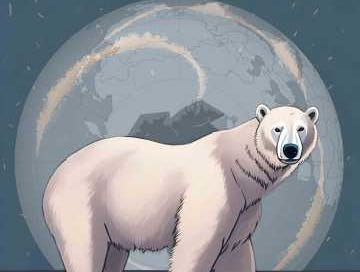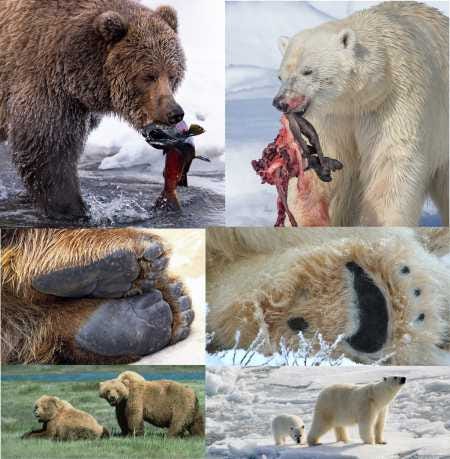Evolutionary Theory has a "Species Problem"
The so-called Modern Synthesis, which hinges on population genetics, still can't describe an explicit biological mechanism to explain how new species arise
[This essay has been adapted from a pre-print paper.]1
Introduction
It’s been more than 80 years since the Modern Evolutionary Synthesis — what biologists call the Modern Synthesis — updated Darwin’s evolutionary principles with the addition of a genetic component.
This paradigm incorporated not only the basic notion of genes, such as what they do and how they vary, but also the mathematical doctrine of population genetics, such as how genetic mutations affect populations over time. Population genetics, which is based on statistical principles that include assumptions of randomness, is considered the "theoretical cornerstone of modern Darwinism."2
Call it what you will — the Modern Synthesis, Modern Darwinism, or Neo-Darwinism— the concept has problems.3
The stickiest of these is a dilemma known as the “Species Problem,” which has been around since Darwin's time: the Modern Synthesis still cannot describe an explicit biological mechanism to explain how new species arise. For example, what exactly had to happen for a wolf to turn into a dog, or a brown bear to become a polar bear?
As evolutionary biologist Ernst Mayr once pointed out (1996:7), Darwin couldn't say how, despite the title of his famous book, and more than 150 years later, we still don't have an answer.4
The fact that this conundrum exists does not in any way undermine the evidence that speciation happens: descent with modification is clearly responsible for generating the organisms alive today, as well as those that came before. I’m simply advocating for the critical evaluation necessary to get evolutionary biology out of what I call its “Mendelian Rut.”
The Species Problem is a perfect example of how any field of science can get bogged down in old ways of thinking.5
In particular, our 80 year old, gene-centered understanding of speciation does not take into account a veritable mountain of new knowledge regarding hormones and their critical role in foetal and postnatal development.
As a result, for multicellular organisms at least, a statement made more than thirty years ago by Ernst Mayr (1988: 208), is unfortunately still true today:6
“…in spite of all the advances of genetics, we are still almost entirely ignorant as to what happens genetically during speciation.”
All criticisms and appeals for a revision of the Modern Synthesis have so far failed to generate workable solutions.7
I contend this stalemate exists because population genetics can’t incorporate developmental effects driven by hormones.
Solving the Species Problem
The population genetic paradigm on which the Modern Synthesis is built, dominated as it is by mathematical and statistical inference, depends heavily on the “one gene, one trait” concept carried over from Mendel. It assumes that species traits subject to natural selection, characterized by individual variation within a population, are due to randomly occurring and accumulating mutations within the genes that control these traits.8
Although it’s acknowledged that many traits have to change during speciation, in practice virtually all population genetic studies that use real animals or plants assume that each and every trait being investigated is under separate genetic control and is selected for different adaptive purposes.9 Seldom do you see studies that look at more than one trait at a time, although there are a few exceptions, with the studies on Galapagos finches that consider beak shape and body size together being one good example.10
Consider, for example, the myriad changes shown below that had to occur to rapidly transform a brown bear, Ursus arctos, into a polar bear, Ursus maritimus, including overall size, skull shape, tooth size, coat colour, behaviour, reproductive physiology, and metabolism.11
The reigning paradigm also insists that because speciation is dependent on the gradual and random accumulation of small genetic mutations, speciation is almost always imperceptibly slow; profound evolutionary innovations, like the reduced hind limbs of whales, are considered the result of these small changes spread over very long periods of time.
Paleontologist Stephen Jay Gould (1980: 120) proclaimed more than 40 years ago:12
“…if Mayr’s characterization of the synthetic theory is accurate, then that theory, as a general proposition, is effectively dead, despite its persistence as text-book orthodoxy.”
Weak spots in the Modern Synthesis that were recognized decades ago are becoming more problematic with time, not less.13
For example, we now have good evidence that speciation is more often fast than slow, and that often it can be accomplished within a few generations.14
In addition, we have known for some time that there are not nearly enough discrete genes to account for all of the changes that occur during speciation.15
Also, evidence from modern epigenetics, the study of various attachments to genes that can modify their function, suggests that genes themselves are not quite what we once believed.16
In short, the "one gene, one trait" concept that population genetics depends upon is known to be wrong and so is the notion that speciation takes tens of thousands, to millions of years, to accomplish. And yet, the operating principle seems to be that if genes are scrutinized ever more closely, and change over time modelled with ever more complex computer programs, the ensuing discoveries will make the errors and contradictions of the Modern Synthesis disappear.17
However, these proposals mean hanging on to the basic tenets of population genetics, which we now know may not just contribute to the problem, they may be the problem.
What we need is a new paradigm that takes developmental effects driven by hormones into account. I took a crack at doing just that for my Ph.D. dissertation in 2004.
More on that to come.
Crockford, S.J. (2023). The species problem and polar bear evolution. ResearchGate preprint, https://doi.org/10.13140/RG.2.2.20218.06089
Mayr, E. (1942). Systematics and the Origin of Species. Columbia University Press, New York.
Okasha, S. (2023). Population Genetics. The Stanford Encyclopedia of Philosophy, Spring 2023 Edition, Zalta, E.N. and Nodelman, U. (eds.) https://plato.stanford.edu/archives/spr2023/entries/population-genetics/
Laland, K.N., Uller, T., Feldman, M.W., et al. (2014). Does evolutionary theory need a rethink? Yes, urgently. Nature 514, 161–164. https://doi.org/10.1038/514161a
Whitfield, J. (2008). Postmodern evolution? Nature 455, 281–284. https://doi.org/10.1038/455281a
Mayr, E. (1996). The modern evolutionary theory. https://doi.org/10.2307/1382704
Darwin, C. (1859). On the Origin of Species. 1966 facsimile, J. Murray, London.
Marie Curie SPECIATION Network. (2012). What do we need to know about speciation? Trends in Ecology and Evolution 27, 27–39. https://doi.org/10.1016/j.tree.2011.09.002
Shapiro, J. and Noble, D. (2021). What prevents mainstream evolutionists teaching the whole truth about how genomes evolve? Progress in Biophysics and Molecular Biology 165, 140–152. https://doi.org/10.1016/j.pbiomolbio.2021.04.004
German, D. and German, S. (2016). Science in the age of selfies. Proceedings of the National Academy of Sciences USA 113, 9384–9387. https://doi.org/10.1073/pnas.1609793113
Mayr, E. (1988). Towards a New Philosophy of Biology: Observations of an Evolutionist. Harvard University Press, Cambridge.
Gould, S.J. (2002). The Structure of Evolutionary Theory. Belknap Press, Cambridge.
Jablonka, E. and Lamb, M. (2020). Inheritance Systems and the Extended Evolutionary Synthesis Elements in the Philosophy of Biology Series, Cambridge University Press, Cambridge.
Laland, K.N., Uller, T., Feldman, M.W., et al. (2015). The extended evolutionary synthesis: Its structure, assumption and predictions. Proceedings of the Royals Society B 282, 20151019. https://doi.org/10.1098/rspb.2015.1019
Pigliucci, M. and Müller, G.B. (eds). (2010). Evolution: The Extended Synthesis. MIT Press, Cambridge.
Futuyma, D.F. (2005). The nature of natural selection. Evolutionary Science and Society: Educating a New Generation. Cracraft, J. and Bybee, R.W. (eds.), Biological Sciences Curriculum Study. Colorado Springs, CO, pg. 93-106. Pdf of entire book here. https://web.archive.org/web/20071111125555/https://bscs.org/curriculumdevelopment/highschool/evolution/pdf.html
Cockerill, J. (2023). A chance event 1 million years ago changed human brains forever. ScienceAlert, 7 May. https://www.sciencealert.com/a-chance-event-1-million-years-ago-changed-human-brains-forever
Diez-del-Molino, D., Dehasque, M., Chacón-Duque, J.C., et al. (2023). Genomics of adaptive evolution in the woolly mammoth. Current Biology 33, 1–12. https://doi.org/10.1016/j.cub.2023.03.084
Liu, S., Lorenzen, E.D., and Fumagalli, M. et al. (2014). Population genomics reveal recent speciation and rapid evolutionary adaptation in polar bears. Cell 157, 785–794. https://doi.org/10.1016/j.cell.2014.03.054
Grant, P.R. and Grant. B.R. (2002). Unpredictable evolution in a 30-year study of Darwin’s finches. Science 296, 707–711. doi:10.1126/science.1070315
Grant, P.R., Grant, B.R. and Abzhanov, A. (2006). A developing paradigm for the development of bird beaks. Biological Journal of the Linnaean Society 88, 17–22. https://doi.org/10.1111/j.1095-8312.2006.00595.x
Penteriani, V. and Melletti, M. (eds) (2020). Bears of the World: Ecology, Conservation and Management. Cambridge University Press, Cambridge.
Gould, S. J. (1980). Is a new and general theory of evolution emerging? Paleobiology 6, 119–130. https://doi.org/10.1017/S0094837300012549
West-Eberhard, M.J. (2003). Developmental Plasticity and Evolution. Oxford University Press, Oxford.
Gould, S.J. (2002). The Structure of Evolutionary Theory. Belknap Press, Cambridge.
Lescak, E.A., Bassham, S.L., Catchen, J., et al. (2015). Evolution of stickleback in 50 years on earthquake-uplifted islands. Proceedings of the National Academy of Sciences USA112(52), e7204–e7212.https://doi.org/10.1073/pnas.151202011
Puritz, J.B., Keever, C.C., Addison, J.A., et al. (2012). Extraordinarily rapid life-history divergence between Cryptasterina sea star species. Proceedings of the Royal Society B 279(1744), 3914–3922. https://doi.org/10.1098/rspb.2012.1343
Rüber, L., Van Tassell, J., and Zardoya, R. (2003). Rapid speciation and ecological divergence in the American seven-spined gobies (Gobiidae, Gobiosomatini) inferred from molecular phylogeny. Evolution 57(7), 1584–1598. https://doi.org/10.1554/02-668
Pennisi, E. (2008). Decyphering the genetics of evolution. Science 321, 760–763. doi:10.1126/science.321.5890.76
Chapelle, V. and Silvestre, F. (2022). Population epigenetics: The extent of DNA methylation variation in wild animal populations. Epigenomes 6(4), 31 https://doi.org/10.3390/epigenomes6040031
Gerstein, M. B., C. Bruce, J. S. Rozowsky, et al. (2007). What is a gene, post-ENCODE? History and updated definition. Genome Research 17, 669–681. http://www.genome.org/cgi/doi/10.1101/gr.6339607
Husby, A. (2022). Wild epigenetics: Insights from epigenetic studies on natural populations. Proceedings of the Royals Society B 289, 20211633. https://doi.org/10.1098/rspb.2021.1633
Richards, E.J. (2008). Population epigenetics. Current Opinion in Genetics & Development 18(2), 221–226. https://doi.org/10.1016/j.gde.2008.01.014
Keough, K.C., Whalen, S., Inoue, F. et al. (2023). Three-dimensional genome rewiring in loci with human accelerated regions. Science 380(6643):abm1696. https://doi.org/10.1126/science.abm1696
Laland, K.N., Uller, T., Feldman, M.W., et al. (2015). The extended evolutionary synthesis: Its structure, assumption and predictions. Proceedings of the Royals Society B 282, 20151019. https://doi.org/10.1098/rspb.2015.1019
Pennisi, E. (2008). Decyphering the genetics of evolution. Science 321, 760–763. doi:10.1126/science.321.5890.76
Pigliucci, M. (2007). Do we need an extended evolutionary synthesis? Evolution 61, 2743–2749. https://doi.org/10.1111/j.1558-5646.2007.00246.x
Whitfield, J. (2008). Postmodern evolution? Nature 455, 281–284. https://doi.org/10.1038/455281a






Dr. Crockford ==> "What we need is a new paradigm that takes developmental effects driven by hormones into account. "
Yes, what we need is indeed a new paradigm....that takes SOMETHING ELSE -- OTHER THINGS -- into account.
It may well be that hormones may be the key and it may well be any one of the myriad other things -- some as yet totally unknown -- that may be the key.
But about one thing you are absolutely right -- Evolution, as considered and taught in today's schools at all levels, including to the tip top of academia, has serious problems. Like many fields of study, evolution is mired in Old Thought, clinging desperately to known-to-be-wrong understandings.
As when I chided my university chemistry professor in the 1960s for teaching a model of the atom which was simply wrong, and known-to-be-wrong, he admitted "I don't know what else to teach!"